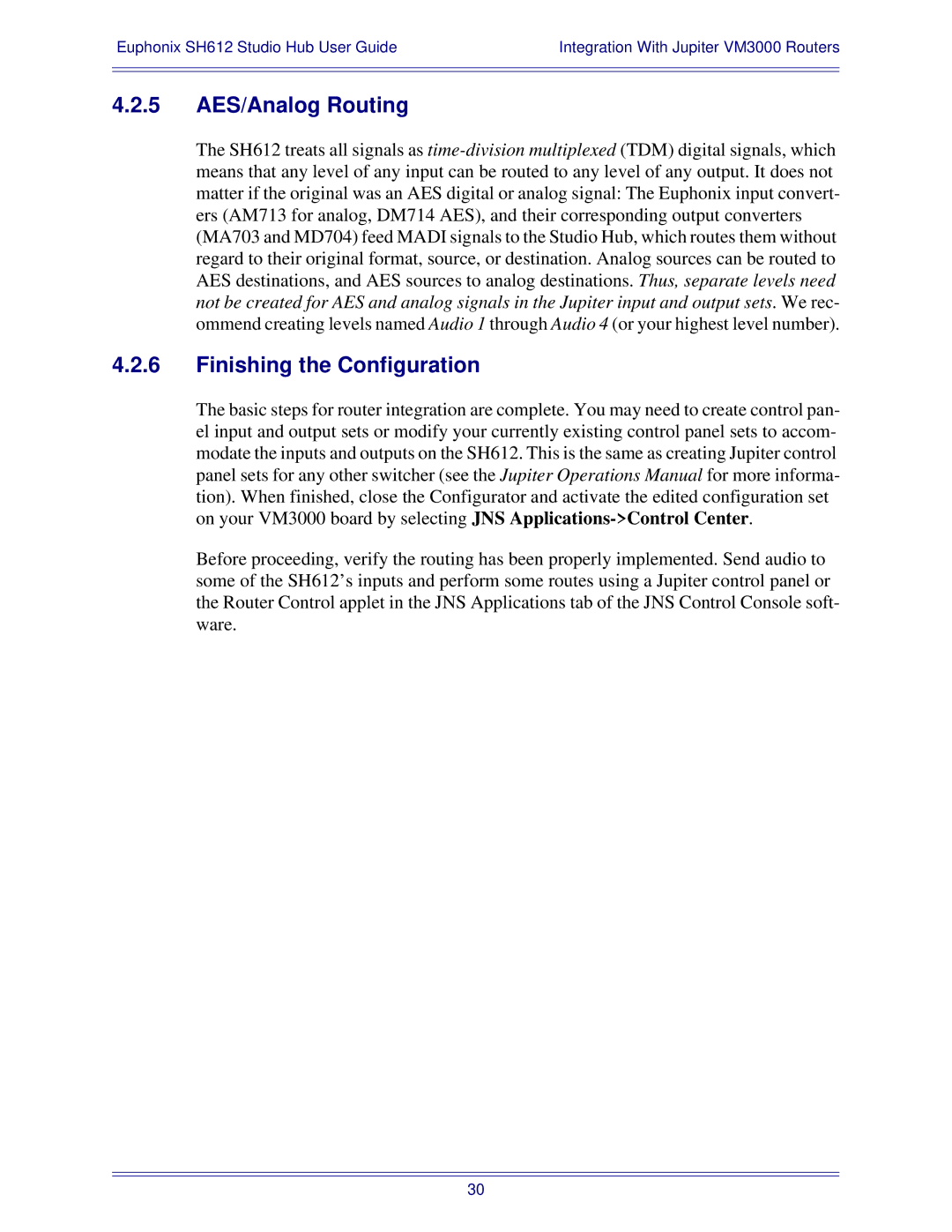Euphonix SH612 Studio Hub User Guide | Integration With Jupiter VM3000 Routers |
|
|
|
|
4.2.5AES/Analog Routing
The SH612 treats all signals as
4.2.6Finishing the Configuration
The basic steps for router integration are complete. You may need to create control pan- el input and output sets or modify your currently existing control panel sets to accom- modate the inputs and outputs on the SH612. This is the same as creating Jupiter control panel sets for any other switcher (see the Jupiter Operations Manual for more informa- tion). When finished, close the Configurator and activate the edited configuration set on your VM3000 board by selecting JNS
Before proceeding, verify the routing has been properly implemented. Send audio to some of the SH612’s inputs and perform some routes using a Jupiter control panel or the Router Control applet in the JNS Applications tab of the JNS Control Console soft- ware.
30
